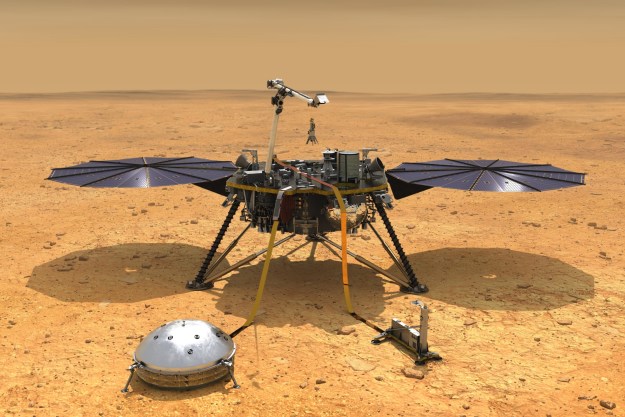The heliosphere is a region of space dominated by the sun, where protons and electrons are released from the sun at extremely high speeds. In order to develop a spacecraft propulsion system that doesn’t require propellants, NASA decided to harness those 400 to 750 kilometer per second solar wind speeds. The Heliopause Electrostatic Rapid Transit System (HERTS) relies on an E-Sail that basically manipulates the sun’s released protons in order to propel spacecraft to the heliopause.
Between 10 and 20 aluminum wires charged with electricity will extend outward from the center of the spacecraft in order to form a circular sail. Each wire is 1 millimeter thick (that’s about the size of a paper clip) and almost 12 and a half miles long (about 219 football fields). The E-sail will use electrostatic to push away the protons that fly by on the incredibly fast solar winds of the heliosphere. Because the protons are repelled by wires that are also positively charged, the physical exchange of momentum creates thrust for the spacecraft.
Centrifugal force pulls the wires into place as the spacecraft rotates at one revolution per hour. And because the wires are so long, the area of the sail is increased exponentially from past E-sail inventions. The increased area leads to longer acceleration and faster speeds which would get spacecraft to the edge of the solar system. How fast? Well, to put it in perspective, the Voyager 1 launched in 1977 and took almost 35 years to make its journey across the heliopause into interstellar space. If HERTS is successful, the spacecraft will be able to make the journey in less than a third of the time.
NASA is spending two years testing isolated HERTS system components within a controlled plasma chamber that simulates the environment of the heliosphere. Engineers hope to scale up the technology for official space launches, but they admit the technology is probably at least a decade away from being used as a viable propulsion system.
Editors' Recommendations
- NASA still struggling to fuel its Space Launch System rocket
- Go on a ‘Grand Tour’ of the outer solar system with these Hubble images
- This tiny satellite will use a solar sail to investigate an asteroid
- This comet is a pristine visitor from the earliest days of the solar system
- Object ‘Farfarout’ confirmed as the most distant object in our solar system


